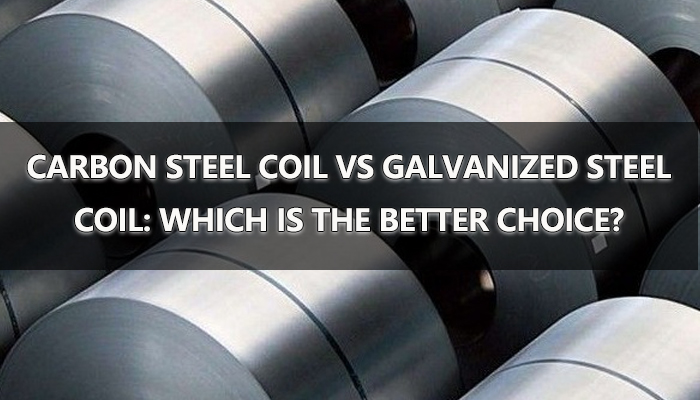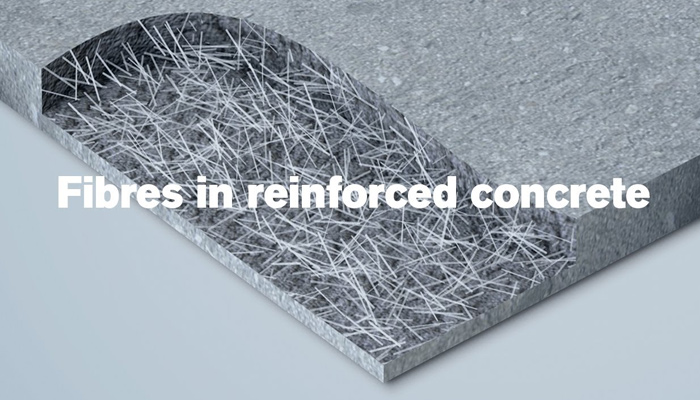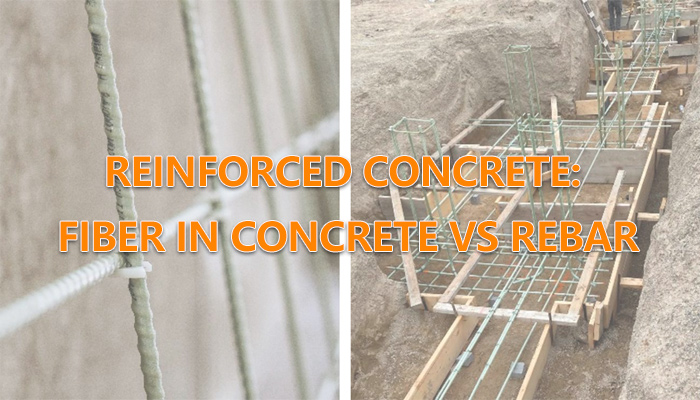Regarding reinforced concrete, two types of reinforcement stand out: fiber in concrete and rebar. We will explore the differences between fiber in concrete and rebar, and help you determine which is best for your project.
Fiber in Concrete vs Rebar
Concrete is one of the most widely used materials in construction, and it’s no surprise why. It’s durable, versatile, and can be molded into various shapes and forms. However, concrete has its limitations, and one of its biggest weaknesses is its lack of tensile strength.
This is where reinforced concrete comes in, which combines the strength of concrete with the durability of steel. But what’s the best way to reinforce concrete? Should we use fibers or rebar? In this article, we’ll compare fiber in concrete vs rebar and help you decide which is best for your project.

What are Fibers in Concrete?
Fibers in concrete are small, thread-like structures made of steel, synthetic, or natural materials. They’re added to the concrete mixture to improve its tensile strength and reduce the risk of cracking. Fibers come in different shapes, sizes, and materials, and they can be used in various applications, including flooring, walls, and bridges.
What is Rebar?
Rebar, short for reinforcing bar, is a common material used in reinforced concrete. It’s a steel bar that’s bent into a spiral shape and embedded in the concrete to provide additional strength. Rebar comes in various sizes and grades, and it’s used in a wide range of construction projects, from buildings and bridges to roads and highways.
Comparison of Fiber in Concrete and Rebar
Now that we know what fibers and rebar are, let’s compare them side by side.
| Property | Fiber in Concrete | Rebar |
|---|---|---|
| Tensile strength | Improved | Excellent |
| Cost | Lower | Higher |
| Durability | Good | Excellent |
| Ease of installation | Easier | More difficult |
| Aesthetics | No impact | Can be seen |
As you can see, both fibers and rebar have their advantages and disadvantages. Fibers are less expensive and easier to install but don’t provide as much tensile strength as rebar. Rebar, on the other hand, is more expensive and harder to install, but it offers superior tensile strength and durability.
When to Use Fiber in Concrete
So, when should you use fiber in concrete? Here are some scenarios where fibers might be the better choice:
- When the concrete is exposed to harsh environments, such as high temperatures or chemicals.
- When the concrete needs to be lightweight and have good insulation properties.
- When the project requires a fast installation process.
- When the budget is limited.

When to Use Rebar
On the other hand, here are some scenarios where rebar might be the better choice:
- When the concrete needs to withstand heavy loads and stresses.
- When the project requires a high level of durability and longevity.
- When the aesthetics of the project are important, the rebar can be left exposed.
- When the budget allows for it.
Conclusion
In conclusion, both fibers and rebar are effective ways to reinforce concrete, but they have different advantages and disadvantages. Fibers are less expensive and easier to install but don’t provide as much tensile strength as rebar. Rebar, on the other hand, is more expensive and harder to install, but it offers superior tensile strength and durability.
When deciding which one to use, consider the specific requirements of your project, including the level of tensile strength needed, the budget, and the aesthetics. By choosing the right reinforcement material, you can ensure that your concrete structure is strong, durable, and long-lasting.
